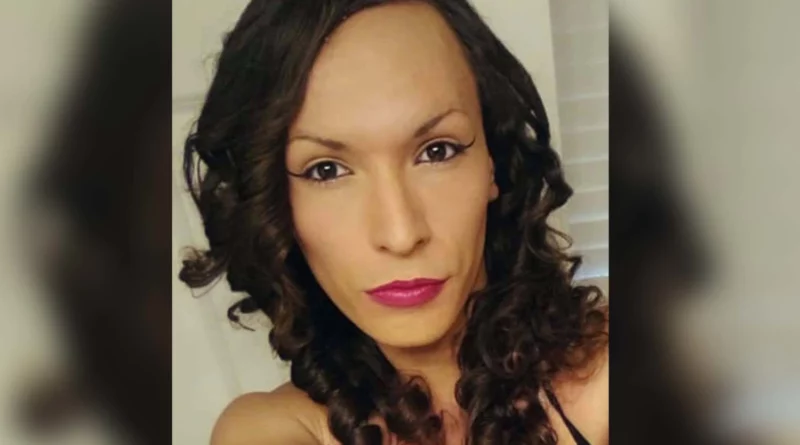Aubrey Dameron Goes Missing and Remains Recovered in Grove Oklahoma
On March 9, 2019, a 25 year old citizen of the Cherokee Nation named Aubrey Dameron left a family home near Grove, Oklahoma, and walked into the dark with plans to meet someone. From that moment forward, family members, friends, and multiple law enforcement agencies were pulled into a long and difficult search. Years later, in early 2025, human remains recovered in far northeast Oklahoma were identified as Aubrey, confirming what loved ones had feared while leaving the most important questions unresolved. The exact manner and circumstances of death have not been publicly determined. What follows is a careful retelling of the known record, the investigative contours, and the work that still remains.
The person at the heart of the case
Aubrey was a daughter, a sibling, a friend, and an artist of personal style who navigated life with humor and grit. Those closest to her describe a quick smile and an instinct to check in with family even during difficult stretches. She was open about her identity as a transgender woman and a citizen of the Cherokee Nation, and she moved between family spaces and social circles with an eye for connection. Any account that reduces Aubrey to a case number loses sight of what mattered most to the people who loved her. The search for answers is not an abstract exercise. It is a promise to a person who had plans and a future.
The last confirmed movements on March 9, 2019
Shortly after the clock pushed past the late hours, Aubrey stepped out near a driveway south of downtown Grove. The stated intention in family accounts was simple. She would meet someone and return. The hour was one at which neighborhoods are quiet, porch lights blink, and the sound of a single car stands out. No verified camera footage has been made public that anchors her path after she left the property. No confirmed text or call after that moment has been released. In that silence investigators found both the narrow window they needed to focus and the wide uncertainty that has complicated the case ever since.
The first hours and days of response
Family members who could not reach Aubrey tried the usual avenues that become the starting line of any search. Calls and messages went out to friends. The small set of places she might have gone were checked. When those efforts did not produce a sighting or a call back, the report moved to law enforcement. Deputies and local officers began interviews and canvassed the corridor around the residence. In Indian Country cases, jurisdiction can be complex, and from the earliest period the Cherokee Nation Marshal Service had an interest in what happened, partnering with county and state agencies as needed. The Oklahoma State Bureau of Investigation and federal programs dedicated to Missing and Murdered Indigenous People have also been connected to varying degrees as the years passed.
The investigative picture that emerged
Aubrey’s last verifiable position was on foot in the early morning near a rural residential area outside Grove. There were no confirmed sightings after that point. Investigators asked the standard questions. Who had reason to meet her that night. Who texted or called most often in the days before. Which vehicles were known to pass through the area at those hours. In a case with limited digital anchors, interviews and timelines carry unusual weight. The absence of quick financial activity, the absence of verified travel, and the absence of a credible sighting all pushed the posture of the case toward suspicion of foul play even when public statements remained cautious.
Community searches and the work of remembrance
Family and volunteers organized searches that covered culverts, fence lines, creek sides, and logging cut throughs where a person could be hidden from casual view. Flyers went up in towns across the Grand Lake region. Local and national attention grew as the months turned to years. Vigils and community gatherings kept Aubrey’s name present and maintained the human pressure that any long investigation requires. These efforts matter for more than morale. They create opportunities for a late memory to surface and for small artifacts to be noticed.
The discovery and identification in early 2025
On January 31, 2025, human remains were found in rural land near Cardin in Ottawa County, north of Grove and near the borderlands of multiple tribal jurisdictions. The Quapaw Nation Marshal Service responded, and the remains were transferred to the Oklahoma Office of the Chief Medical Examiner. In early February the examiner confirmed the identity as Aubrey Dameron. The confirmation delivered a measure of clarity and the dignity of a name attached to remains. It did not settle how, when, or precisely where her life was taken. As of that identification, authorities had not issued a public determination of cause or manner of death.
What the identification changes and what it does not
Identification changes the legal and investigative landscape. A homicide investigation can proceed with a fixed endpoint and with forensic testing focused on a known set of materials. Chain of custody becomes crucial for any item recovered in or near the recovery site. Soil, plant material, insect activity, and micro trace can all hold information that was beyond the reach of earlier methods. At the same time, the identification does not change the absence of public answers about the last hours in Grove, nor does it resolve the central questions about motive and opportunity.
Jurisdiction and cooperation in Indian Country cases
Because Aubrey was a citizen of the Cherokee Nation and because remains were found on land connected to tribal jurisdiction, the case sits at the meeting point of tribal, county, and state authority. That can be a strength when agencies coordinate and share resources. Tribal marshals bring local knowledge and community trust. County investigators bring experience with regional offenders and properties. State and federal partners bring laboratories and specialized teams. The most effective path forward is a clear delineation of responsibilities, a shared evidence management plan, and consistent communication with family so that they hear developments from investigators rather than from rumor.
Theories and the discipline required to test them
Two broad theories tend to surface in public conversation. The first is that Aubrey met someone she knew, entered a vehicle, and was harmed either quickly or after a short transport. The second is that she encountered an opportunistic offender while walking and was forced into a vehicle or taken on foot to a nearby location. Each theory must be tested against what is known about vehicle movement in the area, phone activity in narrow time windows, and the eventual recovery of remains far to the north. A responsible investigation resists the temptation to elevate a theory without evidence. The right approach is to list the implications of each theory, identify the tests that could support or weaken them, and run those tests thoroughly.
Digital and forensic avenues that still hold promise
Even with a gap of years, analytic work can pay off. Historical cell site data can be modeled against modern coverage maps to pinpoint sectors that were active around the residence on March 9, 2019. If devices linked to persons of interest were present, timing advance and sector handoffs can narrow movement. Vehicle telematics from that era may still live on dealerships or third party servers and could be subpoenaed if a make and model is known. In the lab, advances in trace DNA, mitochondrial analysis, geochemical soil comparison, and pollen and spore profiling can tie a person or a vehicle to the recovery site or to the starting point near Grove. In a case like this, a thin braid of small findings often matters more than a single dramatic discovery.
The context of Missing and Murdered Indigenous People
Aubrey’s case exists within a larger crisis that affects Indigenous communities. The overlapping issues of jurisdiction, resource constraints, and decades of mistrust between institutions and families are well documented. This context does not excuse delay or confusion, but it explains why families and tribal authorities insist on direct participation in search and investigative planning. The lesson for any agency is simple. Bring families in early. Share what can be shared. Be clear about what cannot be disclosed and why. Transparency builds cooperation, and cooperation shortens cases.
What remains unknown and what would answer it
Several questions still frame the heart of the case. Who contacted Aubrey in the hours before she left. What vehicle, if any, was seen near the residence at that time. What is the earliest reliable point after March 9, 2019, at which a witness, a camera, or a digital record intersects with a person who might have been involved. How did remains recovered near Cardin come to be there, and what does the condition of the site say about the time and method of placement. Answers to those questions would allow investigators to build a chargeable narrative that honors the truth of what happened.
A call to conscience and to precision
Someone knows more than they have said. That sentence is not a figure of speech. It is the distilled reality of almost every solved case like this. If you were in Grove or along the roads out of Grove on March 9, 2019, and you remember a person on foot at an odd hour, a vehicle pulled over without clear reason, a conversation that did not sit right the next day, or a boast that sounded like a warning, now is the time to speak. Precision matters. Dates, times, landmarks, and directions matter. Even small fragments can align with lab findings and digital reconstructions to complete an arc of proof.
Closing reflection
Aubrey Dameron’s story is not only a set of dates and places. It is the life of a person who loved and was loved, who hoped and planned, and who deserved the safety and dignity we owe one another. March 9, 2019, marks the moment when her path was forced into darkness. Early February of 2025 marks the moment when her name was finally attached to the remains that were found, offering a measure of certainty and a renewed obligation to finish the work. The end we are moving toward is not a headline. It is a truthful account and a just response. That is what her family deserves, what her community expects, and what the record demands.
Discover more from City Towner
Subscribe to get the latest posts sent to your email.




